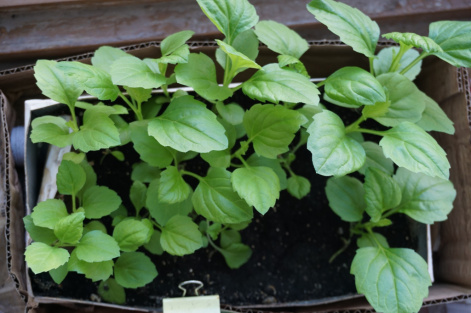Krasnoyarsk scientists have informed about the best way of protecting seedlings in spring
24 May 2019 г.

There are some basic factors influencing the life of plants; these are light, water, heat and nutrition conditions. Temperature is one of the most important factors, for example, consumption of nutrients, growth and development of the organism depend on temperature.
Almost each plant has its place of origin, which determines the range of favorable temperatures. Almost all garden plants growing in Siberia originated from the south. For the well-being of plants under severe conditions, plant breeders develop new cold resistant plant varieties. The first important thing for a gardener is to choose the correct variety, which is able to adapt to low temperatures. A variety unsuitable for the local conditions will not live for a long time. For this reason, we should not buy seedlings in the places other than the firms with good reputation. In Krasnoyarsk this is the Minusinsk fruit and berry station.
If to consider berry plants in Siberia, these are, first of all, strawberries. They, usually, endure winter rather well, even under some small amount of snow. The death can occur in spring due to the alternation of warm and cold periods: thawing and frost. During such periods, the root system can be ruptured and the plant can die. Another reason is damping off when a shoot is plunged into water for a long time, for example, when thawing begins but snow has not disappeared yet, and the plant is choked.
Shrubs are represented by raspberry, currant, gooseberry, honeyberry, shadberry. Raspberry should be covered, otherwise it can be killed by frost. Honeyberry and currant are resistant to low temperatures. In nature, they often grow under severe conditions, thus, when growing in gardens they can endure low temperatures and small frosts. Gooseberry does not endure cold so well, but there are varieties which are adapted to the local conditions. Mainly, all the plants with the local origin stand winter conditions well, the tips can be frost-bitten but it is not critical.
It is slightly more difficult with fruit crops. Their origin is not in Siberia but plant breeders develop adaptive varieties of apple trees, pear, plum, cherry and even apricot which are resistant to severe conditions. Thus, it is very important to choose varieties carefully. There are many varieties of cherry, apple-tree and pear which can survive in the cold climate but it is much more difficult to find a variety of apricot, which is a very delicate tree, it hardly endures low temperatures, being rather sensitive to spring frosts.
In the period of strong temperature fluctuations young sprouts of garden plants become the most vulnerable. Many people worry about spring snowfalls but one should not be afraid of them; they could even have some positive effect since the melting snow fills the reserve of soil moisture. It is the temperature fluctuations which are dangerous for plants. For the young crops to survive in cold conditions the plants must be covered, the horticultural fleece of different types is available now. Greenhouses can also be covered from above. It creates another protective layer which is sure to protect the sprouts from frost. It is worth noting that plants endure low temperatures better when the medium is wet. Thus, if there is a risk of low temperatures, one should think about watering.
In general, it is worth mentioning that the most vulnerable life periods for vegetables and flowers are appearing sprouts and for fruit crops and berries – the period of blossom. If frosts come in this period, for sure, there will not be any fruit; thus, it is important to pay attention to weather forecasts and take measures to protect future harvest.
Share:
